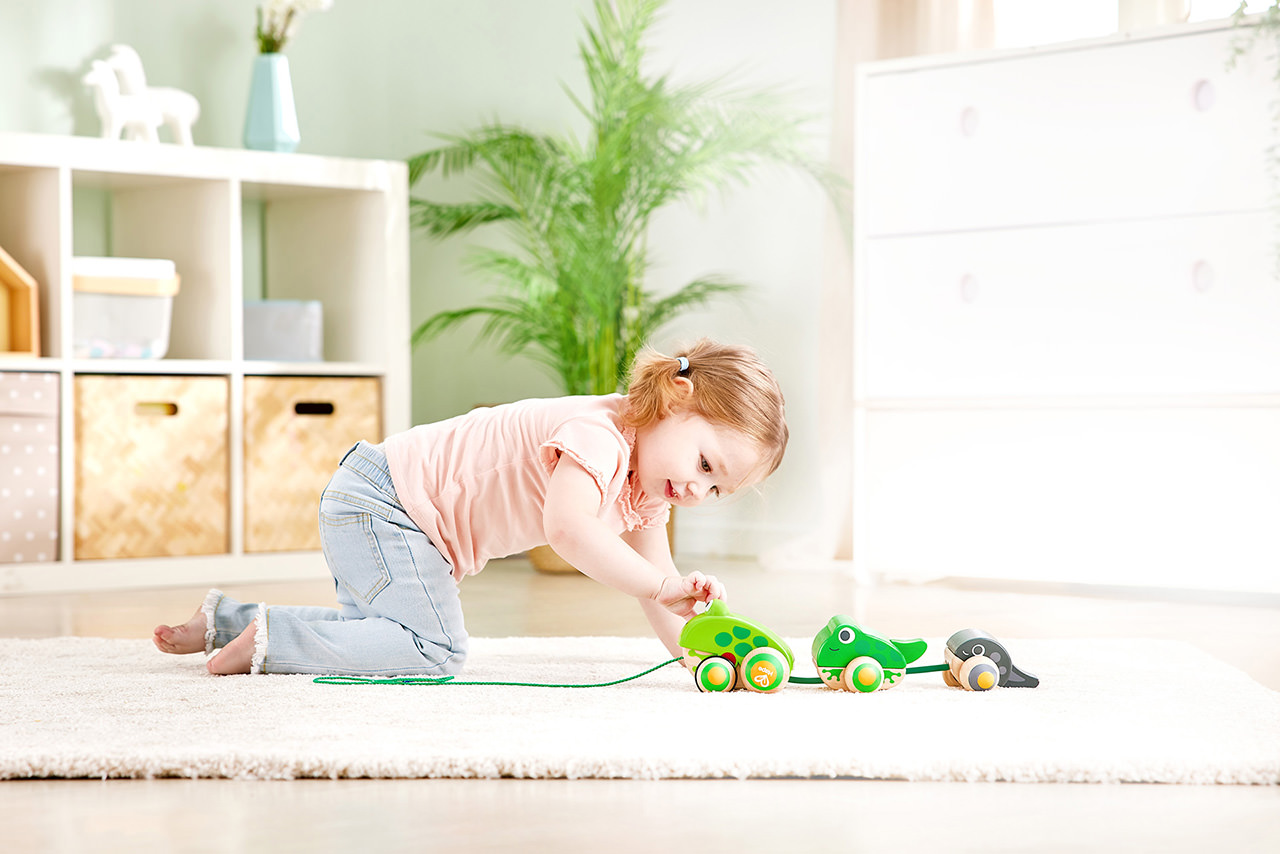09 February 2024
4 min.
The holiday season often brings an influx of new toys and games into our homes, making it a pivotal time to teach children about gratitude and appreciation. The Montessori approach, with its emphasis on mindful play and purposeful learning, offers a wonderful framework for teaching children to love and cherish their existing toys.
Enter the practice of toy rotation – a simple yet effective strategy to keep playtime fresh and engaging, without the constant influx of new toys. By incorporating the Montessori philosophy and the practice of toy rotation, we can guide our children towards a deepened sense of contentment and value for their belongings, both old and new.

Toy rotation is about giving children access to a curated selection of toys for a set period, allowing them to explore each toy thoroughly before introducing a new set. This method not only helps in reducing clutter but also enhances your child’s engagement and creativity. By periodically reintroducing toys, they are seen with fresh eyes, reigniting your child’s interest and curiosity.
The Montessori philosophy champions the idea of intentional play, encouraging the use of toys that foster development, creativity, and independent learning. Toy rotation complements this approach, as it allows children to focus on a select group of toys, exploring their full potential and mastering different skills in the process.
With toy rotation, the emphasis shifts from quantity to quality. Children learn to value each toy for its unique qualities and the possibilities it offers. This practice encourages a mindful approach to play, fostering a deeper connection and appreciation for each item in their toy collection.
After the holiday season, children might find themselves with a hefty selection of new toys. This is an opportune moment to introduce your child to toy rotation. Here’s how:
Assess Your Toy Collection: Start by taking stock of what you have. Look for toys that encourage open-ended play and creativity.
Integrate Old and New: When curating sets for rotation, integrate both new holiday toys and beloved old ones. This ensures a balance and helps in maintaining interest and engagement.
Establish a Rotation Schedule: Decide on a frequency that works for your child. This could be weekly, bi-weekly, or even monthly.
Involve Your Child: Make the toy rotation a collaborative effort. Encourage your child to participate in choosing which toys to rotate, fostering a sense of autonomy and decision-making.
Observe and Adapt: Pay close attention to your child’s interests and adapt their toy sets accordingly. This observation is key in making the toy rotation successful and enjoyable.
The toy rotation method also helps to instil an understanding and appreciation of sharing. It encourages children to find the join in sharing their toys with others and the benefits this brings to group play, allowing them to unlock new ways of learning and development in the process. Here are a few ways you can use toy rotation to encourage sharing and thoughtfulness:
Create a Sharing Box: Allocate a box where children can place toys they are willing to share or swap with friends. Rotate these shared toys just as you would with their personal collection.
Community Sharing Initiatives: Explore community toy libraries or organize toy swap events within your neighbourhood. This teaches children about communal sharing and reduces the need for new toys, creating a more sustainable way to play and reducing excess waste.
Mindful Gifting: Encourage children to gift toys they’ve outgrown or no longer need to friends, family, or charity organisations. This fosters a sense of generosity and community and offers teaching opportunities about giving back to those less fortunate.

Beyond the immediate benefits of enhanced engagement and reduced clutter, toy rotation also aligns with a sustainable approach to living. By choosing to cherish and make the most out of each toy, we are teaching our children the importance of sustainability and the joy that can be found in simplicity.
Montessori toy rotation presents a wonderful opportunity to teach children the art of appreciation and the joy of mindful play, especially amid the post-holiday wind-down period. It encourages them to see the value in each toy, fostering a sense of contentment, creativity and a deeper connection and sense of gratitude towards their toys.
As we enter the new year and put the holidays behind is, it’s important that we guide our children towards a fulfilling and mindful approach to play that’s joyful, intentional and nurtures their development, one toy at a time.
